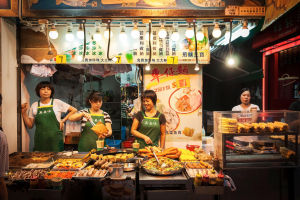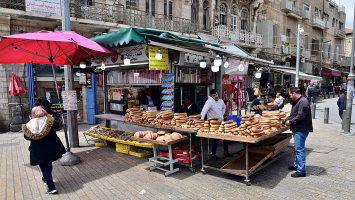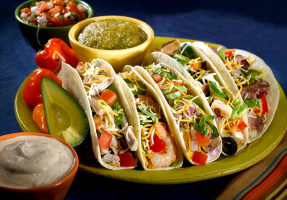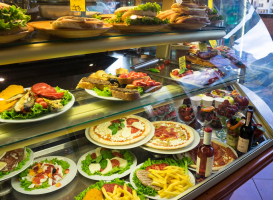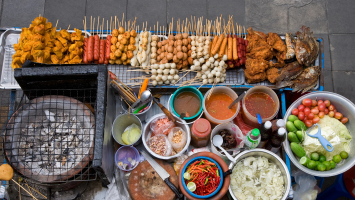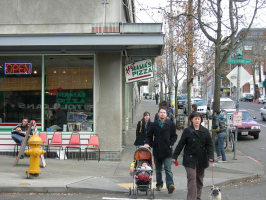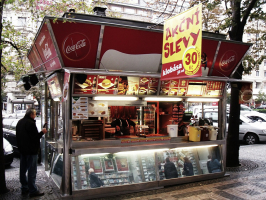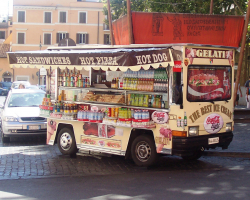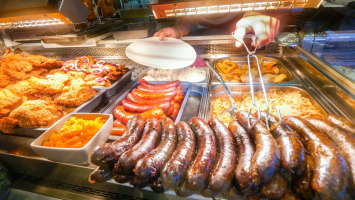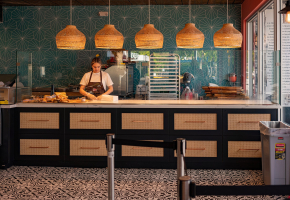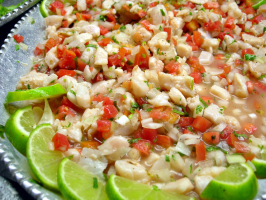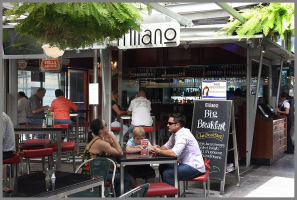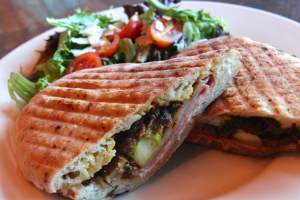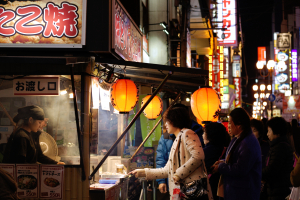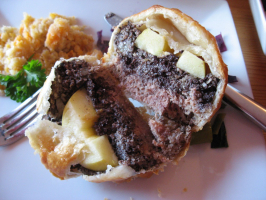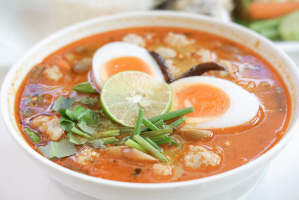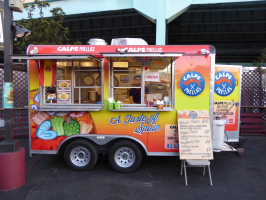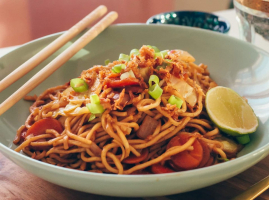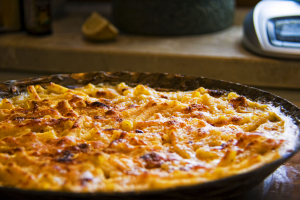Top 10 Best Street Food in Seoul
When talking about Korean cuisine, you cannot ignore Seoul street food available at traditional markets, street stalls and modern food trucks. This article ... read more...introduces the best street food in Seoul that any visitor to the Korean capital must try.
-
When naming the best street food in Seoul, the most typical and typical of Korean cuisine, you cannot ignore an extremely familiar name among these dishes - Tteokbokki. This dish is widely known as spicy stir-fried rice cake, and is very popular with diners in many places, enjoying it when they have the opportunity.
Although it has become very popular and is sold in many places, Tteokbokki is still worth finding and enjoying when you have the opportunity to take a tour of Korea. Because when tasted in the 'homeland', the dish can ensure its unique original flavor. Soft, hot rice cakes filled with a characteristic spicy sauce are a favorite dish of Korean people, especially in winter when the weather is cold. You will easily enjoy this delicious dish on every street in Korea, from street food stalls to luxury restaurants.
A portion of Tteokbokki looks extremely attractive and irresistible with many eye-catching colors, in which the bright red color of chili sauce is the main highlight and characteristic of the dish. Tteokbokki and its attractive image are also frequently used to promote Korean cuisine and culture.
There's nothing better than enjoying hot, spicy Tteokbooki in the cold weather. The cake is simple but famous and contributes significantly to creating the charm of Korean cuisine, with many unique features that make it difficult for diners to forget when they have the opportunity to try it.
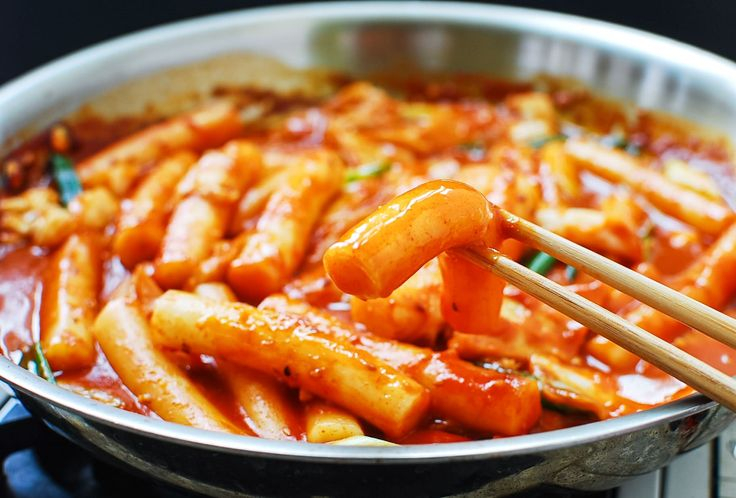
Screenshot of https://www.pinterest.com/pin/283023157821766713/ Vídeo by Malayali in Korea -
Eomuk is a dish that often appears in Korean movies, so it can be said that movies have brought images of fish cake skewers around the world and contributed to the fame of this dish. The delicious flavor of Eomuk combined with some vegetables and spices according to their own secret creates a chewy, flavorful dish, much more special than other types of fish cakes. Through many processing stages, the traditional flavor is still retained.
As for Korean fish cakes, due to the cold climate, Koreans' preference is to eat hot and spicy dishes. The habit of eating fish cakes is to skewer them on a sharp bamboo stick and cook them with broth. These fish cake skewers always create an eye-catching, unique feeling and have a bit of a street food feel along with convenience: easy to hold and easy to eat.
Eomuk's shape is made so that it is easy to skewer, delicious, and beautiful. There are usually 3 forms:
- Thin rectangular piece – Sakak Eomuk – 사각어묵.
- Long stick – Bong Eomuk – 봉어묵.
- Pill form – Bol Eomuk – 볼어묵.
The nutrients of Eomuk mainly come from the main ingredient which is fresh fish meat, rich in protein, and calcium and low in fat. The estimated figures are that 100g of Korean fish skewers have about 113 calories; including 12.3g of carbohydrates; 13.2g of protein; 0.67g of fat and other minerals.
Eomuk is a benign dish, good for your health and digestive system. In particular, this fish cake contains very little sugar and starch, so it is also very good for children or the elderly and can be included in the weight loss menu for women.
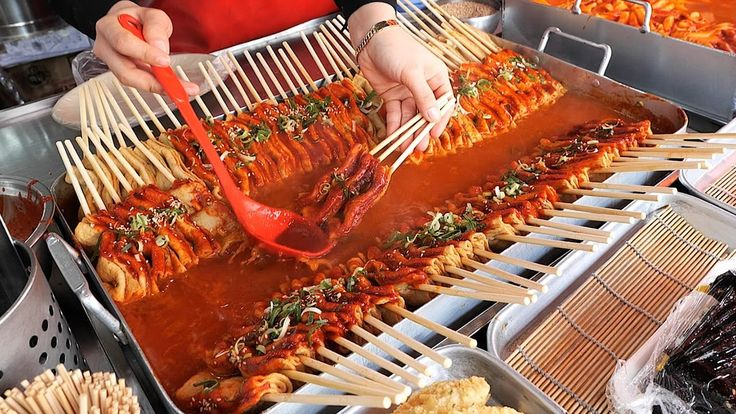
Screenshot of https://www.pinterest.com/pin/440156563589546767/ Video by 딜라이트 Delight -
Kimbap is a popular Korean dish that has gained worldwide recognition for its delicious taste and beautiful presentation. This traditional dish is packed with flavors and textures that make it an absolute delight to the senses. It's no exaggeration to say that Korean kimbap is one of the most delicious rolls in the world besides sushi.
A delicious piece of kimbap is when there is harmony between all the ingredients. First, the seaweed leaves are sturdy enough to not rot easily while rolling the rice. Next, the rice must be supple enough, not too dry or too mushy. Carrots are sliced to taste, fried eggs are cooked well and vegetables are boiled just right. Each ingredient reaches perfection so the kimbap can achieve its delicious taste.
Kimbap is not just its taste, but also its versatility. It can be enjoyed as a quick snack or as a complete meal, and it's often served at picnics, and school lunches, or even as a convenient on-the-go option. The combination of different flavors and textures, along with the visually appealing appearance, makes kimbap a true culinary masterpiece from Korea.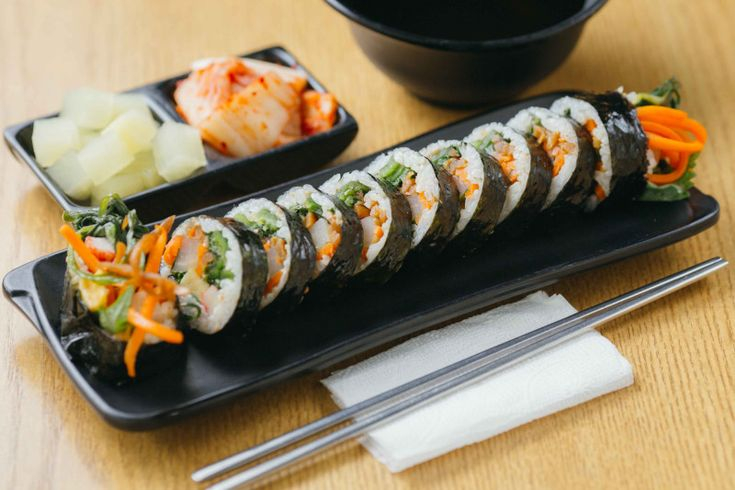
Screenshot of https://www.pinterest.com/pin/15973773666859875/ Video by Honeyrove -
Dakgangjeong is a Korean fried chicken dish that is internationally praised for its irresistible flavor and unique preparation. This mouthwatering dish consists of bite-sized chicken pieces that are deep-fried to perfection, resulting in an outer layer that is delightfully crispy and golden brown.
Dakgangjeong has a distinct sweet and savory glaze. The chicken is coated in a sticky, caramelized sauce that perfectly balances the flavors of sweetness and tanginess. This glaze is made using a combination of soy sauce, honey, garlic, ginger, and other secret ingredients, creating a complex and addictive taste.
The outer layer is incredibly crunchy, while the meat inside remains tender and juicy. This contrast in texture is part of what makes this dish so popular with diners and has helped Dakgangjeong earn its place among the best street food in Seoul.
Dakgangjeong is not only popular as a standalone dish; it is often served as a side dish or part of a larger meal. It pairs harmoniously with a bowl of steamed rice or accompanies a few glasses of cold beer at a Korean fried chicken joint. Dakgangjeong is a must-try dish that will leave you craving more with each delicious bite.
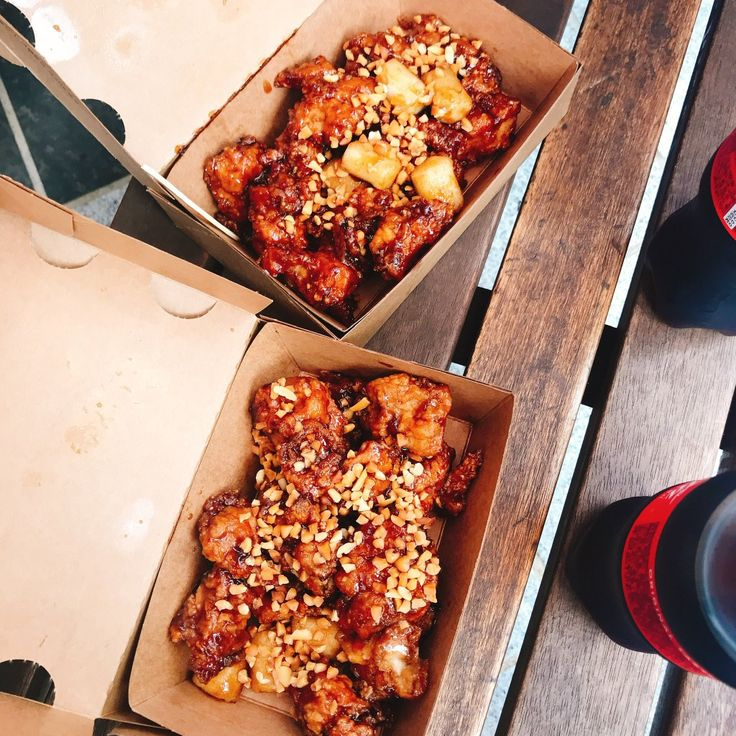
Screenshot of https://www.pinterest.com/pin/333547916151018100/ Video by 딜라이트 Delight -
Bungeo-Ppang is a favorite childhood snack of many people. You can easily see carts or trucks selling it in the street food in Seoul during winter. The pastry itself is shaped like a small fish, resembling a goldfish with its crispy exterior and golden hue.
Bungeo-Ppang has a red bean filling that overflows from within. The rich and velvety red bean paste, made from slow-cooked adzuki beans, brings a sweet and earthy flavor to every bite. It is a nostalgic taste that reminds many of their childhood, evoking a sense of warmth and happiness.
Street vendors in Seoul skillfully prepare Bungeo-Ppang using traditional techniques handed down through generations. As you walk through the bustling streets, the aroma of freshly baked pastries captures your senses, drawing you in. The golden fish-shaped pastries are cooked to perfection, creating a crispy outer layer that provides a satisfying crunch with each mouthful.
Recipe to make Bungeo-Ppang:
- In a medium-sized basin, combine wheat flour, baking powder, milk or water, and optional eggs for the batter. Well-mix them. Pour the mixture into a jug with a spout to make pouring simple.
- A Bungeo-Ppang pan should be preheated to medium-low heat. Brush some melted butter or frying oil on the pan quickly.
- Over the Bungeo-Ppang pan, pour the batter mixture. Don't cover half of the pan. Cover the fish mold by adding extra batter mixture on top after adding your preferred filling. Close the pan and swiftly flip it over.
- Fry the fish pastry for two minutes on each side, or until it turns golden brown. Fish pastry should be taken out of the pan and given a little time to cool on a rack.
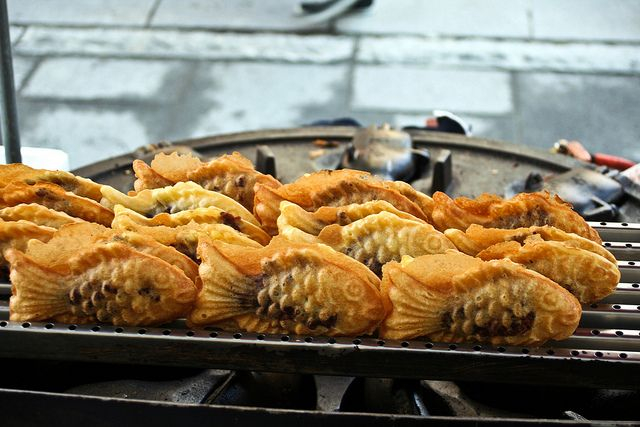
Screenshot of https://www.pinterest.com/pin/8444318026856254/ Video by Mukkebi 먹깨비 -
In Seoul street food, a form of blood sausage is called Sundae. It is a street food staple in Korea, both North and South. It is prepared by combining sticky rice, cellophane noodles, and pork blood. The result is a body that is slightly sticky and dense.
You'll likely enjoy Sundae if you enjoy blood and chewy, mochi-textured foods. The mild flavor of Sundae is enhanced by the addition of sesame seeds, sugar, salt, ground shrimp, and chili powder. The flavor of the blood is exquisitely discernible.
Steamed offals like liver and lung are frequently served with the Sundae. Sundae slices and their sides are dipped in a mixture of salt and black pepper (Seoul), vinegar and gochujang (Honam), seasoned soybean paste (Yeongnam), and soy sauce (Jeju). Snack bars and restaurants frequently sell sundaes. Sundae is dipped in Tteok-bokki sauce and served alongside fritters and Tteok-bokki, which are frequently sold in snack shops.
There are many other delicious and attractive dishes, but Sundae is still a name loved by many people, including young people here. Not only is Sundae a cheap and nutritious dish, but it is also a dish that reminds a difficult time for Koreans.
However, because it is made from ingredients such as the small and large intestines of pigs as well as blood, for many foreigners, not everyone dares to try Sundae. Currently, many Korean companies have sought to process frozen Sundae for export to many other countries.

Screenshot of https://www.pinterest.com/pin/1133710906182207907/ Video by 딜라이트 Delight -
Bindaetteok is the best street food in Seoul. It is also known as Korean-style Pizza made from green beans. In the past, Bindaetteok green bean pancakes were not a culinary specialty like they are today but were simply green bean pancakes stuffed with available vegetables.
Bindaetteok is a popular dish for people during poor harvests or lean days when all rice and wheat run out. However, in reality, this is a very popular dish among Korean aristocrats and it is often present on the dinner tray in the royal court.
In addition to mung beans, other ingredients in the batter for Bindaetteok include water, chopped kimchi, minced pork, bean sprouts, and a variety of seasonings to enhance the savory and nutty flavor. After the Bindaetteok mixture is ready, it is cooked in a hot pan with lots of cooking oil after being thinly distributed into a circular shape. Golden mung bean pancakes will be crispier and more attractive if you use a lot of oil.
Served piping hot, Bindaetteok is often accompanied by a flavorful soy-based dipping sauce, which enhances the overall taste. The combination of crispy edges, fragrant toppings, and the dipping sauce creates a harmonious blend of flavors and textures that is simply irresistible. As you savor each bite, you'll not only experience the deliciousness of this traditional street food but also get a glimpse into the vibrant and rich food culture of Seoul.
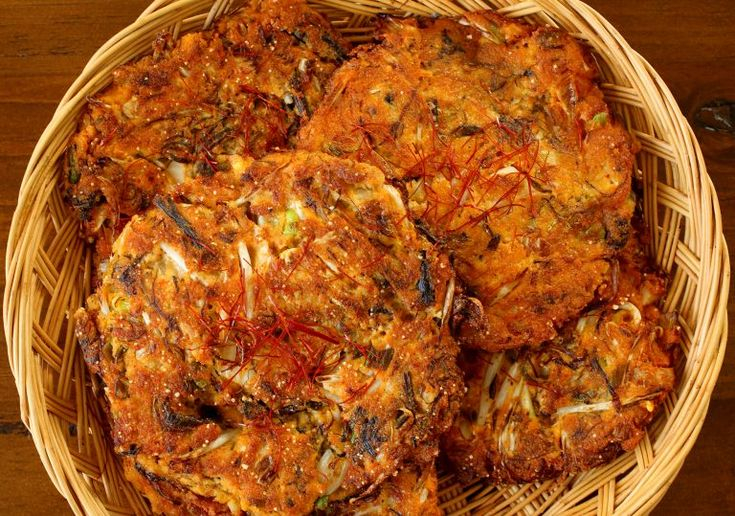
Screenshot of https://www.pinterest.com/pin/285415695124771080/ Video by 딜라이트 Delight -
Gamja Hot Dogs is a popular street food in Seoul that has taken the city by storm. Inspired by the traditional Korean hot dog, Gamja Hot Dogs add a unique twist to this classic favorite. Made with a soft and fluffy dough, these hot dogs are wrapped around a savory sausage and deep-fried to perfection.
Gamja Hot Dogs' toppings and fillings are very diverse. From crispy potato flakes to gooey mozzarella cheese, each bite is a burst of flavor. Some popular choices include the Original Gamja Hot Dog, which features a combination of cheese and sausage, and the Mozzarella Hot Dog, filled with stretchy melted cheese that oozes out with every bite.
You can try making Gamja Hot Dogs at home with the recipe below:
- Cut the hot dogs in half to begin. Roughly the size of the split hot dog cut the mozzarella cheese block into sticks. First, use a hot dog, then cheese, on a stick, and skewer. To keep them cool, place them in the refrigerator.
- Combine flour, milk, egg, sugar, baking powder, and a little amount of salt in a bowl and stir until smooth and thick. To make it simpler to dip the hot dogs, transfer the batter into a tall cup.
- Keeping the stick in place, thoroughly coat the hot dogs, making sure the batter sticks to the cheese and hot dog.
- Take the battered hot dog right away and coat it completely with panko, pressing down gently to ensure that all of the panko is on it.
- Heat cooking oil in a non-stick pan. Then add each sausage one by one and fry until golden brown, then take it out.
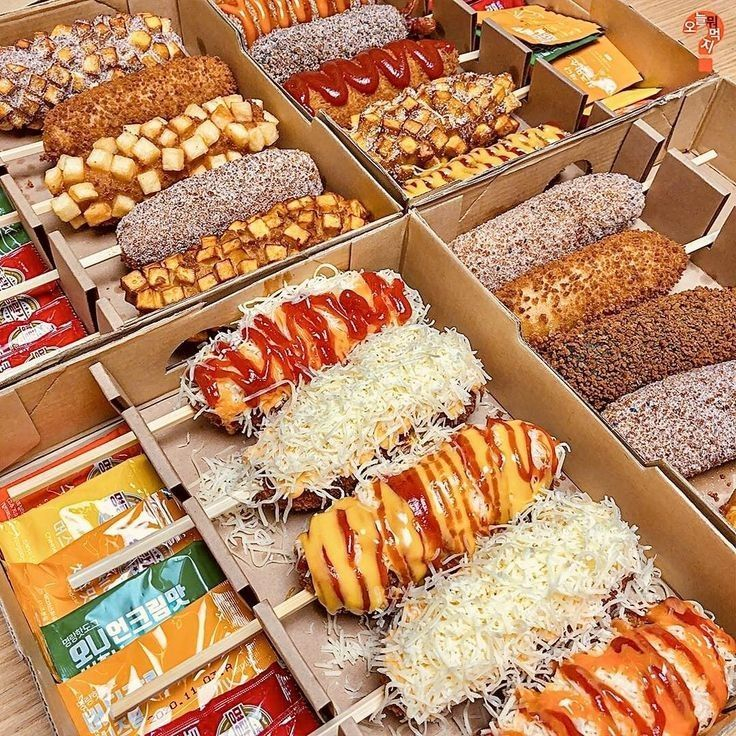
Screenshot of https://www.pinterest.com/pin/710231803751384326/ Video by 야미보이 Yummyboy -
The best street food in Seoul is hotteok which is a well-liked Korean dish. It's a great treat or snack, and you could even eat it in the morning. This classic Korean-filled pancake is produced with flour, sugar, milk, and water in a yeasted dough.
After that, the dough balls are shallow-fried till perfectly brown and crispy. A circular, flat stainless steel tool is used to press the dough down onto the griddle while they fry, giving them their flat, round shape. The crispy, golden exterior of the chewy hotteok dough is created by frying it in a small amount of oil in a hot skillet, around a hot, syrupy core flavored with cinnamon and sprinkled with chopped walnuts.
The most popular versions include cinnamon, peanuts, sunflower seeds, honey, brown sugar, and sunflower seeds. The resulting pancake has a crisp outside and a molten inside made of brown sugar, and it is served hot. On a chilly day, hotteok is the ideal snack.
There are countless ways to fill them because the dough is so adaptable. This hotteok recipe can serve as the foundation for whatever filling you want.
- Sift flour, sugar, and salt into a bowl, and mix well. Continue to add yeast and mix well, make a small hole in the center of the flour bowl, and add fresh milk. Wait for the baking powder to reach standards.
- Mix sugar, cinnamon powder, and crushed nuts together.
- Spread the dough thinly (about 1cm thick), then scoop a spoonful of filling into the middle and wrap it tightly.
- Put oil in a good non-stick pan, over medium heat, when the oil is hot, add the cakes. When the cake surface is golden, flip it over, then use a cooking shovel or spoon to flatten the cake. Continue frying until both sides are golden.
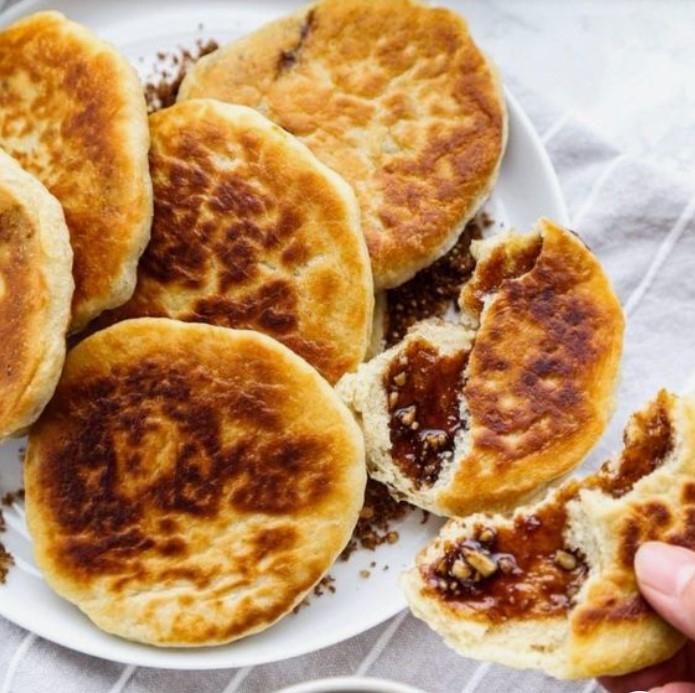
Screenshot of https://www.pinterest.com/pin/31454897388686229/ Video by 딜라이트 Delight -
South Korean candies called "dalgona" are created with melted sugar and baking soda. It is still consumed as a throwback street snack from the 1960s. A small amount of baking soda added to melted sugar causes the baking soda to thermally decompose and release carbon dioxide, which causes the liquidized sugar to inflate and turn into a crunchy, light candy as it cools.
Usually, a cookie cutter is used to imprint an image, such as a star or a heart, on the candy by pouring the creamy beige liquid onto a flat surface, pressing it flat, and stamping. As a challenge, customers attempt to cut their way around the snack's outline without destroying the image. A free dalgona is traditionally given to the customer by the vendor if this trimming is finished without shattering the candy.
In addition to pastries like scones, modern cafes in Seoul feature unique dalgona coffee beverages, which consist of dalgona-flavored coffee cream piled above iced tea or coffee. Dalgona was also used by some cafes to make sweets like souffles and bingsu.
In an episode of the Netflix series Squid Game, Dalgona made an appearance. The second game in the series is a lethal variant of the Dalgona challenge. The candy's popularity was revived in South Korea and its global ubiquity increased as a result of the film's success and widespread appeal. In addition, people have started using social media platforms like YouTube and TikTok to share cooking recipes and challenges related to making their own candies at home.
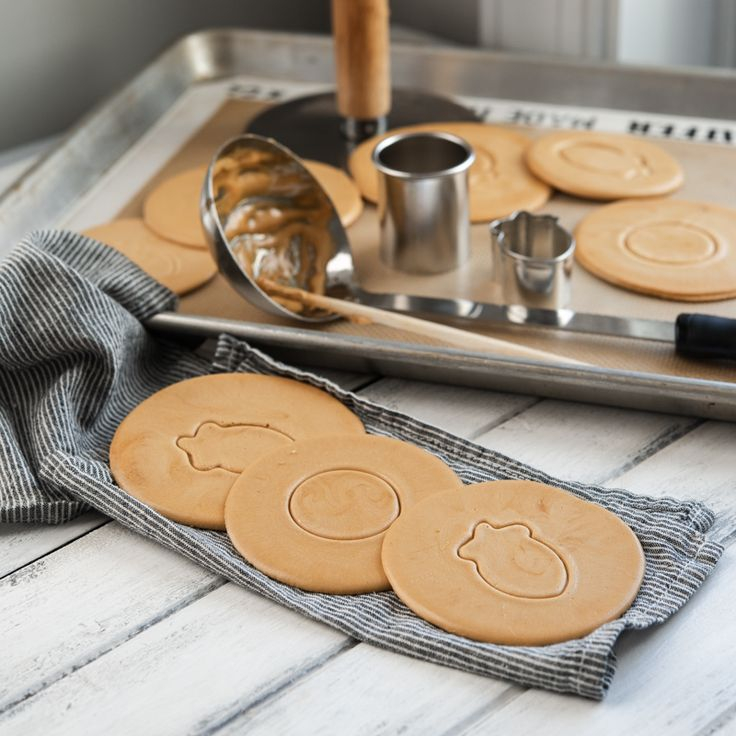
Screenshot of https://www.pinterest.com/pin/582582901827505015/ Video by 야미보이 Yummyboy












